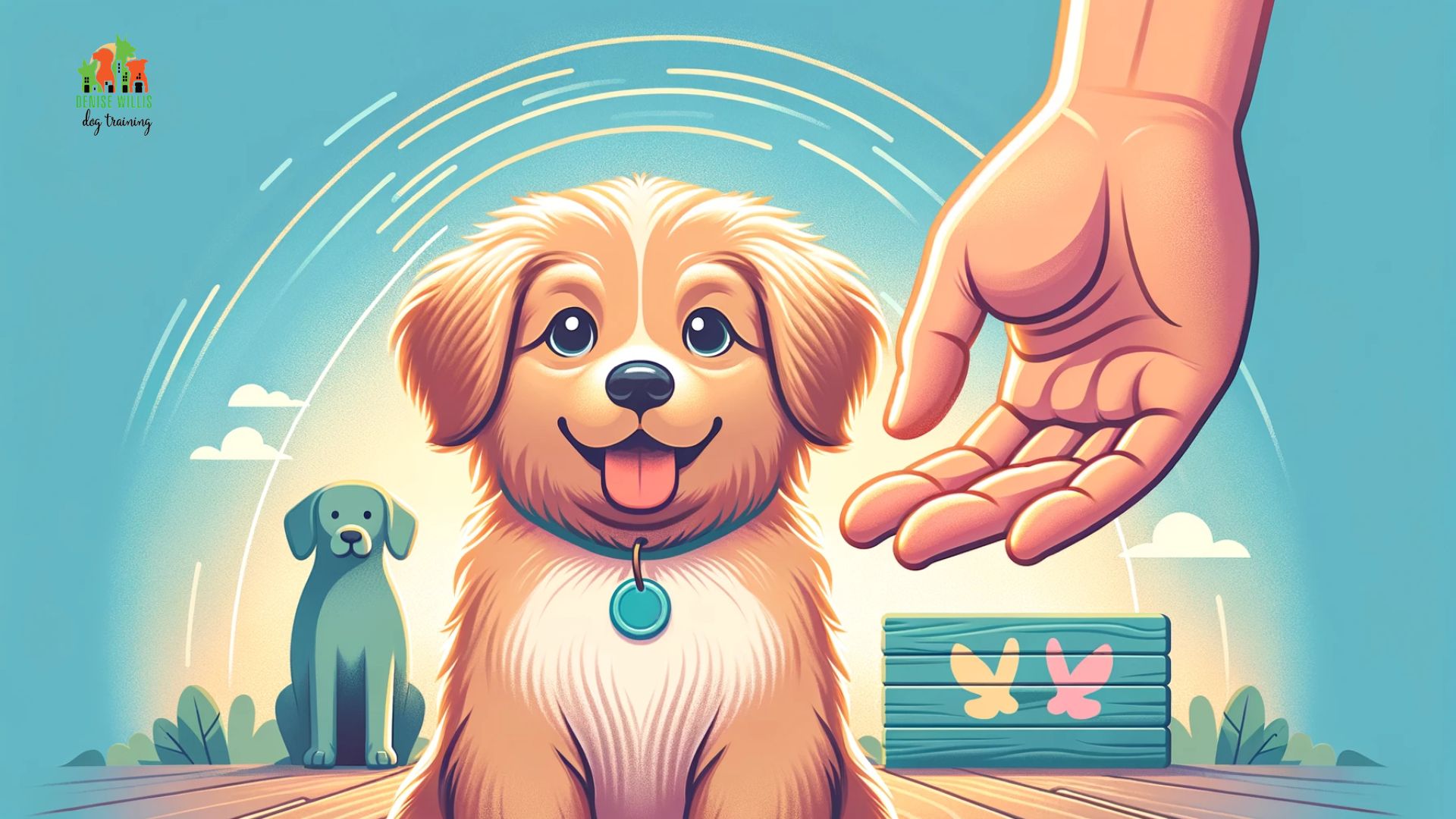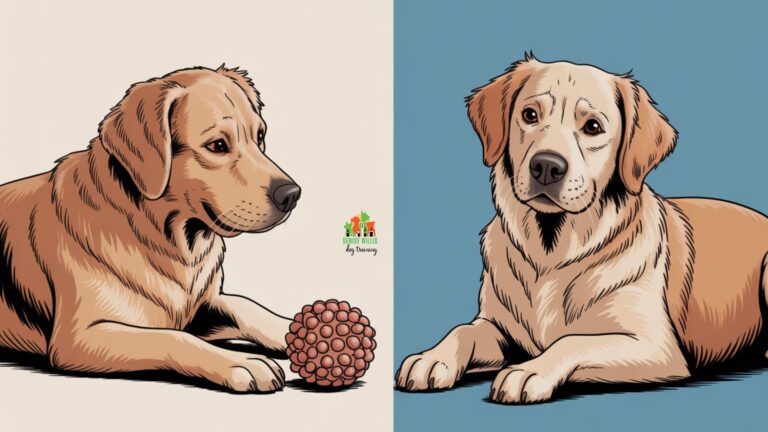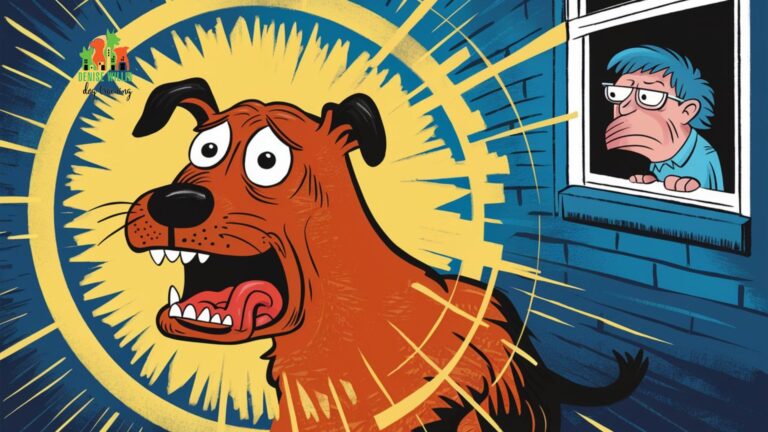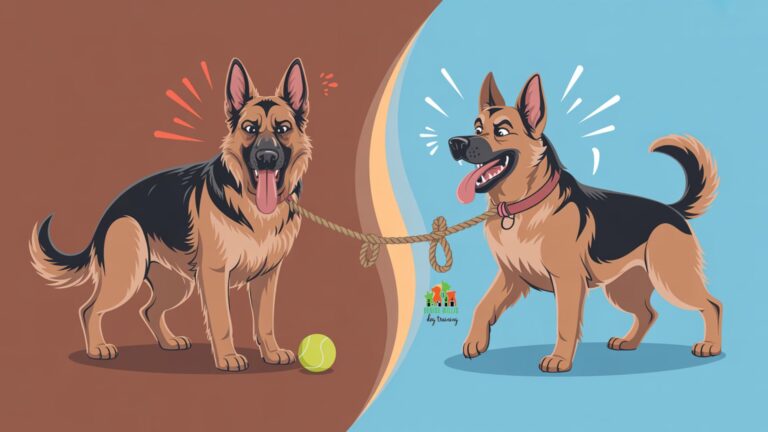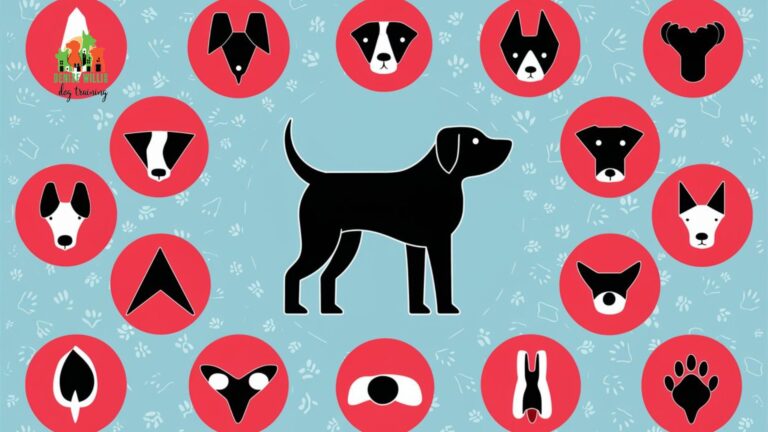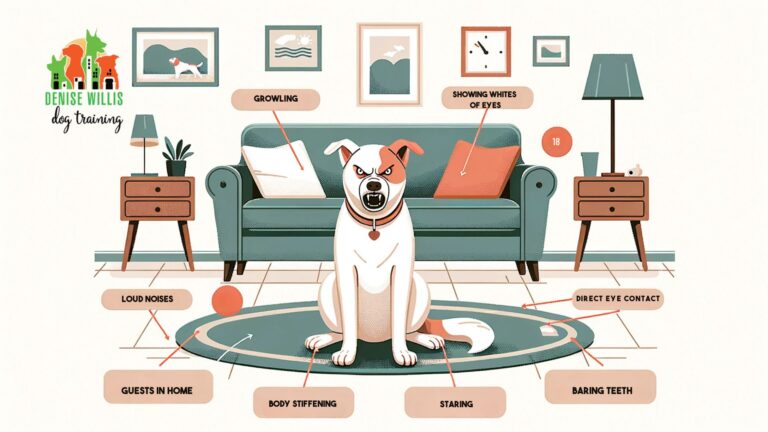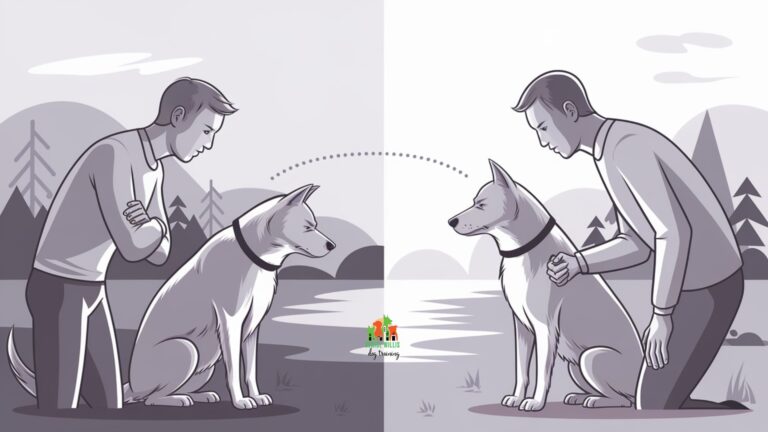Preventing Aggression in Puppies: Empowering Your Furry Friend Through Compassionate Training
📍 Service Area Notice: DW Dog Training provides in-person training services exclusively in the Greater Baltimore area. While our blog content is designed to help dog owners internationally, our hands-on training services are locally focused. For readers outside our service area, we hope you find value in our articles and welcome you to reach out with questions!
Aggression in dogs can be a concerning issue for pet owners, especially when dealing with puppies who are still developing behaviorally. Puppy aggression, if not properly addressed, can lead to larger issues down the road. However, the good news is that puppy aggression can often be prevented with proper training and socialization during these formative early months.
This comprehensive guide covers everything owners need to know about puppy aggression, including signs to look out for, underlying causes, prevention tips, and what to do if aggression surfaces. With the right approach, puppies can grow into well-adjusted, friendly companions.
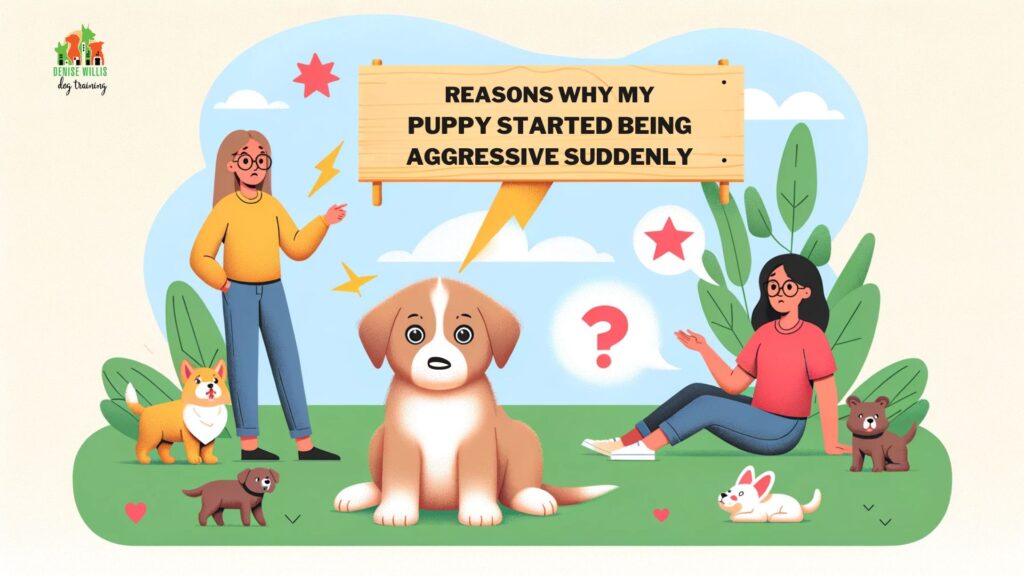
Key Takeaways
- Puppy aggression, if not addressed early, can lead to problematic behaviors in adult dogs. Warning signs in puppies include growling, snapping, stiff posture, etc.
- Lack of socialization is a top cause of puppy aggression. Positive exposures to people, places, and handling in the critical 3-16 week puppyhood window prevents issues.
- Medical problems like pain can also trigger aggressive reactions. Rule out health causes first before behavioral intervention.
- With dedicated socialization, training, and owner education, nearly all puppies can overcome fearful/aggressive tendencies. Customized modification plans from professionals maximize success.
- Patience and consistency are vital – it takes immense time and effort to reshape puppy behavior. But the rewarding companion for life makes it worthwhile.
- If aggression issues persist despite your best efforts, reach out to an accredited trainer or behaviorist for an evaluation and training plan tailored to your puppy’s needs.
Understanding Puppy Aggression: When Does It Start?
Aggression in puppies can begin to emerge as early as 3-5 weeks old when puppies are still with their mothers and littermates. This is when puppies start to establish dominance and a “pecking order” amongst themselves. The puppies will scrap and nip at each other frequently, with dominant pups being more assertive about getting what they want.
The most critical socialization window is between 3-14 weeks of age. During this phase, puppies rapidly develop bonds and sensitivity to people, dogs, and environments around them. Positive interactions are crucial in shaping puppies’ perceptions. Without enough exposure or with traumatic experiences, puppies can grow up fearful or undersocialized.
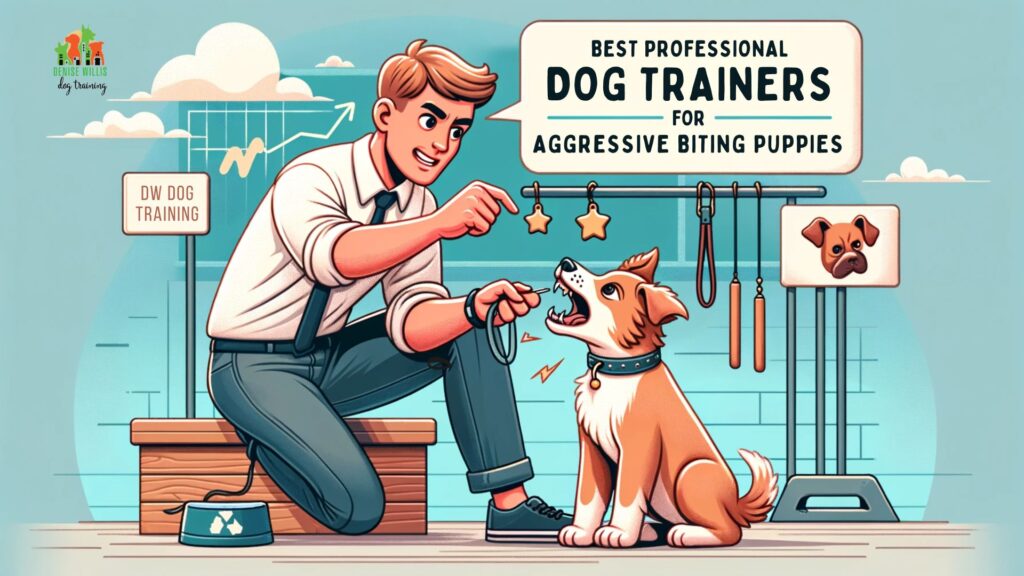
7 Common Signs of Aggression in Puppies
While puppies naturally play rough, it’s important to distinguish normal play from problematic aggression. Warning signs owners should look for include:
- Growling when approached, especially near food or toys
- Excessive biting, especially coupled with frustration
- A stiff, tense body posture
- Raised fur along the back
- Intense staring/whale eye (visible whites of eyes)
- Attempts to stand over/dominate other dogs
- Lunging, barking, or snarling at strangers or in new situations
Puppies giving multiple signals simultaneously or frequently are typically on high alert and may act out. It’s vital to address the underlying issues.
Table 1: Comprehensive Aggression Warning Sign Breakdown
| Aggression Sign | Sample Associated Behaviors | What It Signals |
| Growling | Low rumble accompanies tense posture, pulled back lips/exposed teeth, whale eye, tail lower between legs | Heightened wariness and guardedness – puppy communicating they feel threatened and defensive |
| Excessive Biting | High-intensity inhibited mouthing during handling or play that leaves marks; may be coupled with deep snarls and stiff posture | Attempting to communicate through outlet of biting to make uncomfortable situation cease; signals frustration |
| Stiff Posture | Tail and ears erect, weight forward almost in tentative “launching” stance, minimal body movements with sudden jerky reactions | Apprehension; readiness to move into aggressive display upon smallest provocation perceiving threat |
| Raised Fur | Entire coat or just hackles/fur along spine stands on end, making puppy appear larger while maintaining tense posture | Defensive posturing reflecting increased stress/fear/agitation |
| Intense Stare/Whale Eye | Unblinking direct stare that reveals the whites surrounding the pupils; target tracked and entire focus intensely fixed | Hypervigilance and total attentiveness triggered by apprehension or guardedness in situation |
| Attempts to Stand Over/Mount Other Dogs | Crouched posture hunched directly over another dog’s back; head held high surveying surroundings while excessively sniffing other dog | Dominance displays to showcase elevated status and rank to peers |
| Lunging/Barking at Unknowns | Sudden bursting attempts to approach triggers like strangers while vocalizing loudly; may be coupled with snarling | Territorial reaction motivated by underlying nervousness/uncertainty; puppy trying to take control through offensive maneuver |
What’s Causing This Behavior? Common Causes of Puppy Aggression
Lack of socialization is one of the leading causes of puppy aggression. Without enough positive exposure to people, dogs, sights, and sounds, puppies can become fearful. Traumatic or scary past experiences can also lead to reactivity later.
Medical conditions causing discomfort or pain can also spark aggressive behavior. Dogs learn to associate approach signals (like reaching to pet them) with pain.
Possessiveness over resources is another very common trigger. Whether it’s food, toys, space, or attention, puppies learn to use aggressive displays to protect their valuables.
Establishing dominance motivates some puppies to act out aggressively, though this is less common. Attempts to stand over/mount other dogs or resist commands demonstrate a puppy trying to assert leadership.
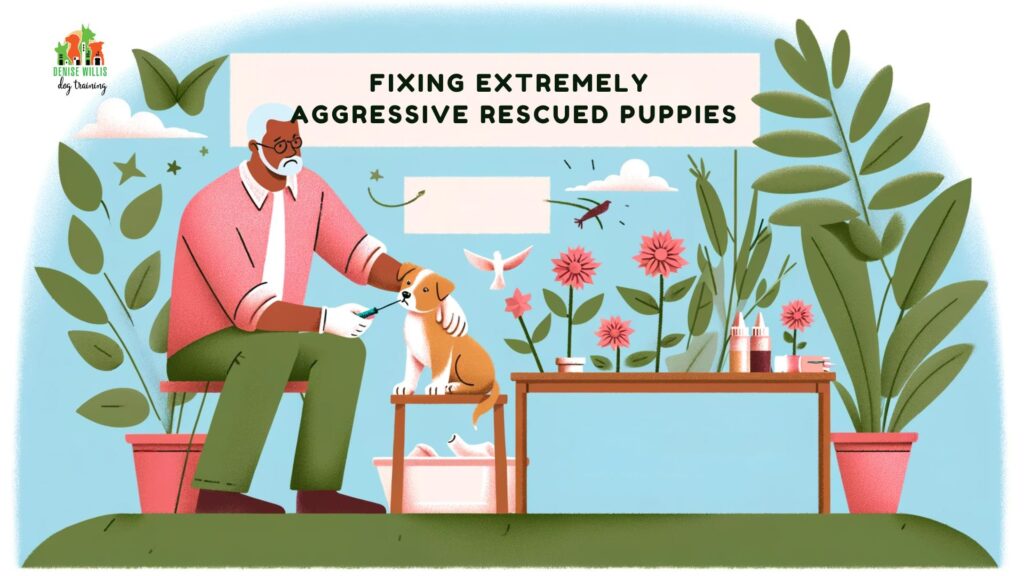
Aggression Prevention Tips: Stopping Puppy Aggression Before It Starts
The key to curbing aggression in adulthood is preventing issues in puppyhood. While not a complete guarantee, the following tips set pups up for success:
- Start socialization before 12 weeks old: Introduce your puppy to a wide variety of people, environments, and dogs (focus on calm, friendly)
- Try puppy classes: Great for socialization and teach bite inhibition
- Use only positive reinforcement training: Reward good behaviors, never punishment
- Discourage possession aggression: Trade items for treats, teach the “Drop it” command
- Gradually desensitize to potentially scary things: Blow dryer, vacuum, car rides
- Establish yourself as the “pack leader” – Set rules/boundaries, reward obedience
- Spaying/neutering in adolescence also helps curb hormone-fueled aggression once the puppy matures.
Table 2: Detailed Early Socialization Block
| Age Range | Socialization Goals | Recruit a variety of willing adults and calm children to provide treats during gentle petting and handling |
| 3-5 weeks | Begin handling stimulation | Provide varied textures, gentle stroking, treats for cooperation |
| 5-8 weeks | Expand environmental exposures | Take on short car rides, play novel sounds during feeds, clanging pots and pans while giving treats |
| 8-12 weeks | Introduce new people diversity | Invite vaccinated friend’s dogs for supervised playtime, explore new surfaces like gravel pits and puddles on walks, and incorporate costumed folks for extra novelty while feeding treats |
| 12-16 weeks | Increase exposure diversity | Invite vaccinated friend’s dogs for supervised playtime, explore new surfaces like gravel pits and puddles on walks, incorporate costumed folks for extra novelty while feeding treats |
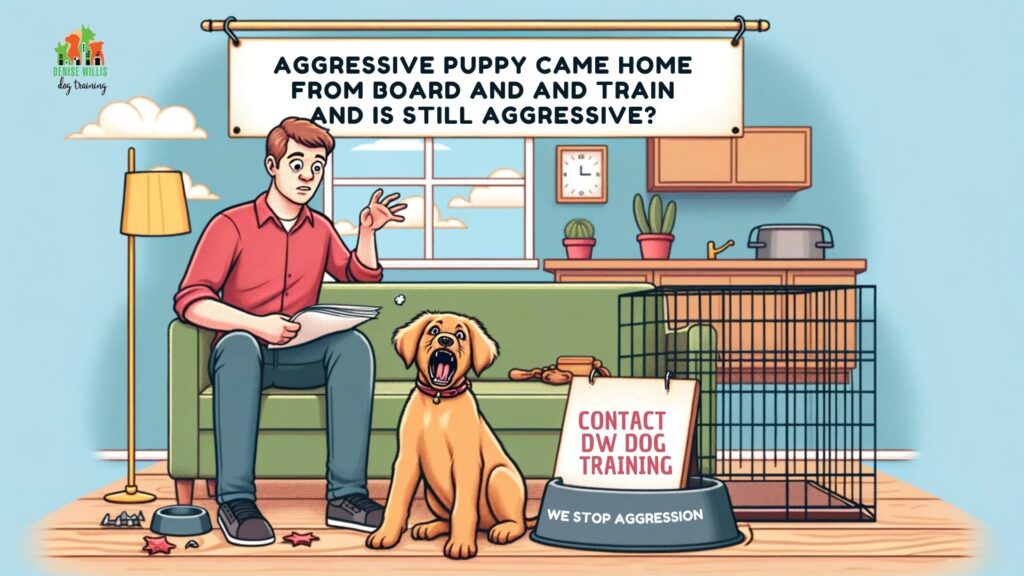
What To Do If Your Puppy Acts Aggressively: Next Steps
If a puppy starts displaying aggressive behavior like growling, snapping, or biting, prompt intervention is required. Here are the next best steps:
- See the vet first: Get medical causes ruled out before behavioral approaches. Pain or illness provokes many dogs.
- Consult a professional trainer or behaviorist: They can identify aggression triggers/contexts and design a customized modification plan. Using rewards-based methods, most dogs can unlearn aggressive habits.
- Ensure everyone’s safety: Use crates, baby gates, and leashes to manage environments. Muzzle train if biting risk. Closely supervise your puppy around children.
- Remain patient and consistent: Behavior change takes immense time and diligence. Stick to the plan and reward progress. If aggression worsens or the puppy can’t be safely managed, reaching out to rescue organizations that can properly care for the pup’s needs may be the kindest.
Table 3: Escalation Levels of Aggression Cases
| Aggression Severity | Veterinary exam to address pain/discomfort; adjust the environment to feel safer; positively reinforce brave behaviors |
| Mild fearfulness causing occasional hesitant nipping or guarded growls | Consult a veterinary behaviorist who can prescribe anti-anxiety or impulse control medication alongside a customized behavior modification plan overseen by the entire veterinary behavior team |
| Ongoing reactivity and inhibited bites despite owner efforts at home | Consult a professional certified trainer or behaviorist for a customized modification plan |
| Unpredictable biting that repeatedly breaks skin; aggression continuing to escalate | Consult a veterinary behaviorist who can prescribe anti-anxiety or impulse control medication alongside a customized behavior modification plan overseen by entire veterinary behavior team |
| Severe aggression failing to improve with comprehensive management and professional intervention | Responsibly rehome puppy or humane euthanasia decision for puppy and community safety |
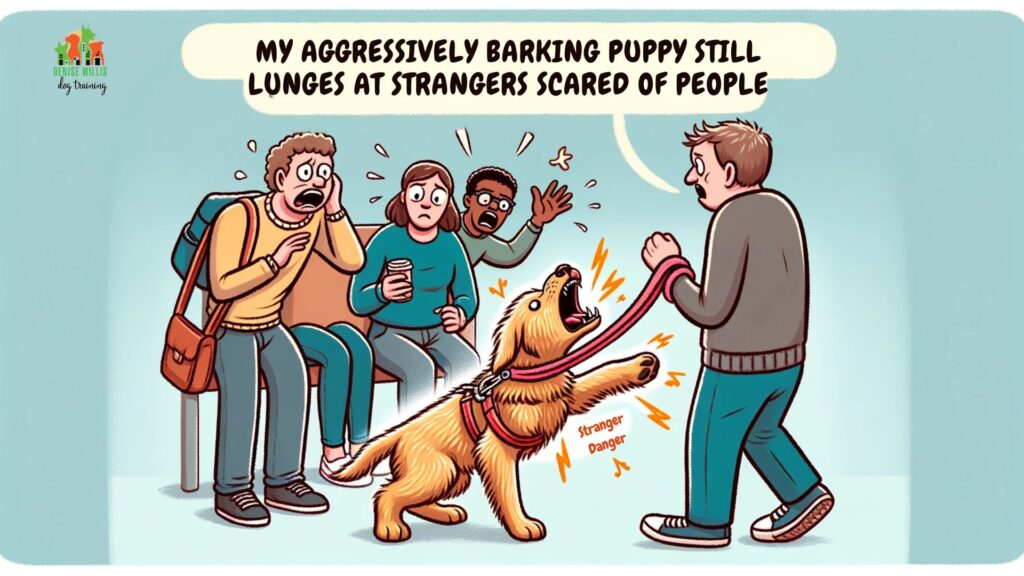
Types of Aggressive Behavior in Dogs & Puppies
While individual dogs display unique aggressive triggers and warning signs preceding an incident, aggression generally falls into several broad categories:
Territorial Aggression
The most common subtype, territorial aggression causes dogs to actively guard areas like their home, yard, or car. Approaching the guarded zones or entering uninvited can provoke growling, barking, or biting to drive intruders away. Territorial aggression typically emerges around 1 year old as adulthood nears but some precocious puppies display this behavior earlier.
Possessive Aggression
When defending “high-value” items from people or animals, dogs respond with possessive aggression. Food, toys, and attention (petting/affection) are frequent triggers. Resource guarding starts young – a puppy may growl if disturbed when eating or playing with a favorite toy.
Fear-Based Aggression
Resulting from negative past experiences or insufficient socialization, fear aggression happens when a dog believes situations or people threaten their safety. They feel compelled to use “fight” defenses to protect themselves from perceived danger. Warning signs like growling or snarling often precede attacks.
Social Aggression
Most prevalent toward unfamiliar dogs and people, socially aggressive pups likely missed proper socialization with enough diversity. They default to unfriendliness when encountering new dogs/humans. Leash reactivity is common too – lunging/barking if unable to investigate people/dogs thanks to the restraint of the leash.
Dominance Aggression
The desire for elevated social status drives some dogs to be pushy, demanding, or outright aggressive. Most targets are family – attempts to discipline lower-standing humans or force interactions on their terms. For example, putting paws on shoulders, blocking paths unless given attention, or allowing handling only when the pup consents. Resource guarding and resistance to handling/commands emerge early.
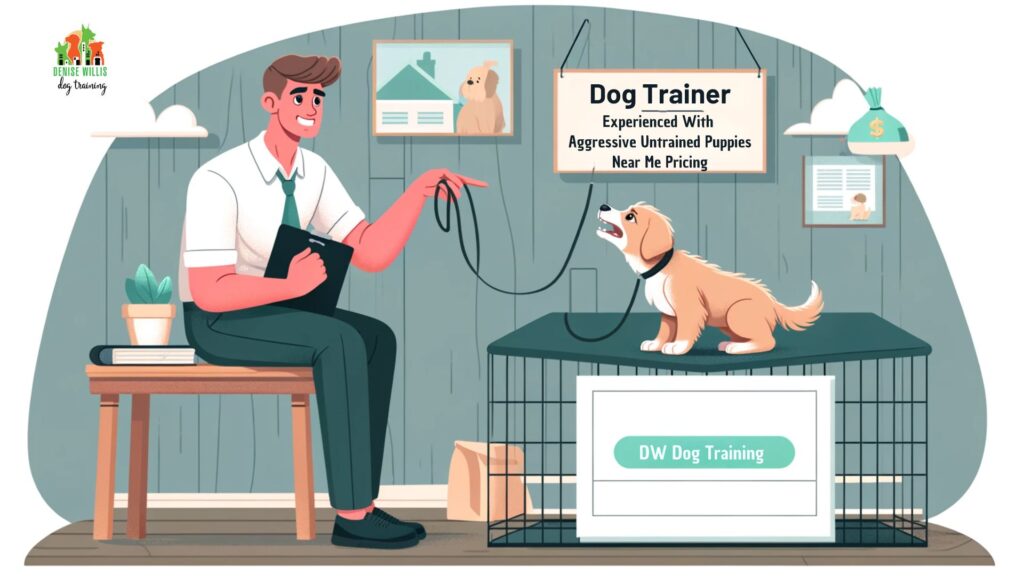
Dog Breed Aggression Myths – The Truth About Dangerous Breeds
Certain breeds of dogs have reputations for being more aggressive thanks to myths around things like locking jaws, raw power, fight drive, etc. However, studies consistently show breed plays little role in aggression. The myth of dangerous breeds with bloodthirsty traits misleads the public.
In truth, most aggression links back to:
- Poor breeding: Nervous parents are more prone to producing fearful offspring
- Lack of early socialization: Undersocialization causes fear reactivity/skittishness
- Individual personality: Just like some humans have shorter fuses; individual dogs’ personalities vary
- Training differences: Reward vs punishment methods yield different behaviors
So while breeds have tendencies wired into their original purposes, companion pups of all breeds/sizes can demonstrate aggression problems without proper socialization, training, and TLC.
Is “Puppy Aggression” or “Puppy Dominance” Actually a Thing?
The concepts of “puppy aggression” and “puppy dominance” require clarification. Normal play between puppies involves plenty of chasing, wrestling, and inhibited biting that to the untrained eye may seem aggressive when it’s simply rambunctious play.
And while some puppies are more bold, pushy, or protective of items, the notion that they plot to actively “dominate” humans the same ways dogs establish hierarchy amongst themselves is outdated. Instead, puppies behave in ways that function to get their needs met. Humans who reward demands for attention inadvertently shape attention-seeking behaviors. It’s not a puppy’s quest for household control.
So next time your lively pup gets the zoomies or defends a stolen sock, remember – it’s normal puppy behavior, not a dominance conspiracy!
Aggression Towards Family Members
One of the most difficult and heartbreaking types, aggression targeting family members occurs if dogs feel their signaling is consistently ignored by humans. Children often struggle to read dogs’ body language. Dogs may resort to escalating to bites/attacks if they can’t escape situations through subtler warnings. Genetics contribute a partial role but positive training helps tremendously. Luckily puppy aggression towards family is fairly uncommon and preventable.
Redirected Aggression in Dogs
Also called “displacement aggression,” this subtype happens when a dog encounters an agitator (person, animal, situation) they want to attack but cannot reach. Their built-up aggression redirects onto an unrelated bystander dog or human. For example, reactively lunging/barking at a passerby, then turning to bite the owner holding their leash once the trigger leaves.
Prevention Through Puppy Socialization
Vigilant socialization is paramount to preventing puppies from becoming aggressive dogs long-term. Safely and gradually introducing puppies to a smorgasbord of sights, sounds, people, body handling and environments lets them habituate to diversity, building their confidence. Fearlessness and friendliness become default reactions when adulthood comes.
Experts recommend puppies meet at least 100 unfamiliar people by 14-16 weeks old through gentle handling and fun engagement. New humans should offer tasty treats as they interact with the pup, pairing positive associations with strangers while respecting puppies’ needs for rest. Exposing puppies to public settings like parks and markets also expands their horizons.
Dog-tolerant adult canines can model good manners for puppies learning play etiquette too. But avid oversight matters – bad experiences risk trauma and wariness later. Overall, early socialization fosters sociable pups adept at adjusting to surprises which fends off defensiveness and aggression over time.
Ongoing Preventative Training
Raising a friendly, non-aggressive dog demands dedicated effort across their lifespan. Puppyhood sets the tone but certain training practices perpetuate happy behaviors. Key elements dog owners should commit to include:
- Continued socialization efforts: Seek new people/dog introductions regularly
- Group training classes: Maintains manners around distractions
- Force-free handling techniques: Use treats and toys to positively motivate, avoid physical discipline
- Build impulse control and trust: Default cues like “Wait”, “Leave It”, and “Come” build cooperation
- Establish core commands: Well-practiced obedience cues like Sit and Down keep dogs in tune with owners
At-home remedies like squirting lemon juice in a puppy’s mouth or harsh physical corrections often backfire, escalating problems. Instead utilizing guidance from accredited professionals ensures progress.
What If My Puppy Keeps Being Aggressive?
Despite an owner’s best efforts at early socialization and training, some puppies still mature into reactive or aggressive adolescents/adults. If a puppy remains unable to safely integrate into home/public life and measures like veterinary exams, trainers, behavior plans and management haven’t produced enough improvement, euthanasia may be the most responsible decision (albeit extremely difficult). The reality is dangerously aggressive dogs jeopardize communities’ safety. However, most privately owned pups reform with diligence and compassion.
Final Thoughts: Preventing Puppy Aggression is Possible
Raising a puppy can be very rewarding but also challenging at times. Some puppies, especially those lacking proper socialization, can develop fearful or aggressive tendencies. However, with dedication and compassion from pet parents, nearly all puppies can overcome these anti-social behaviors.
The key is addressing issues proactively early on. Signs like growling, snapping, or stiff body language communicate a puppy’s discomfort. Understanding the underlying cause allows you to help them feel safe. For example, a puppy acting aggressively around dogs may have had scary dog encounters. With positive training, they can learn other dogs bring fun and treats, not danger. Have patience – it takes immense consistency in showing pups the world is safe before instincts for self-preservation go away.
If your puppy displays ongoing aggression or you struggle to provide proper socialization and training, know professionals can help get behaviors back on track. Our experienced trainers at DW Dog Training specialize in gently shaping more friendly behaviors through customized modification plans. We would be happy to consult with you to determine the right approach for your unique situation.
With the right guidance for owners and TLC for puppies from all involved, nearly every puppy’s challenging tendencies can transform into delightful, gentle manners over time. The lifelong canine companion you’ll gain is incredibly rewarding. So if you need professional assistance addressing aggression or other behaviors in your puppy, contact us today to see how we can help.

